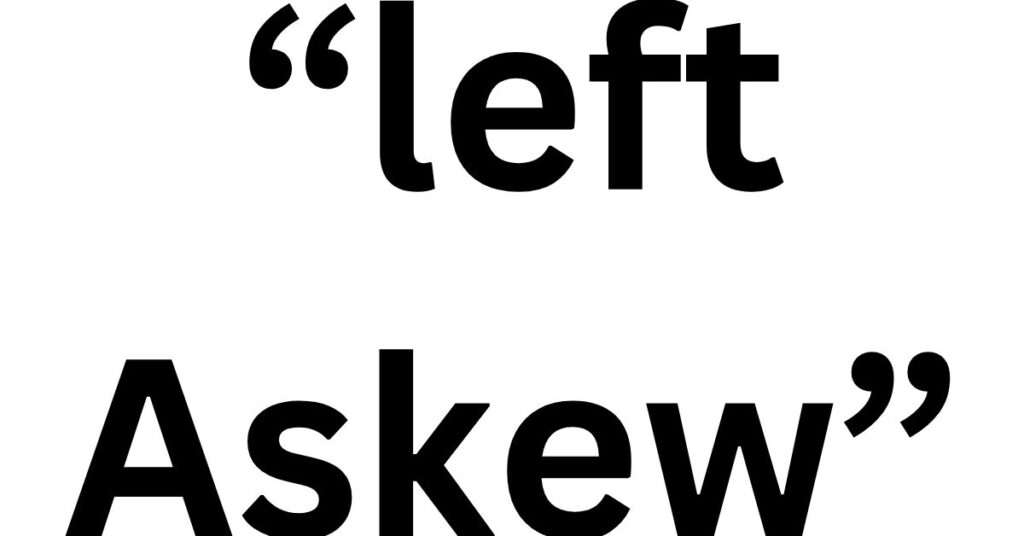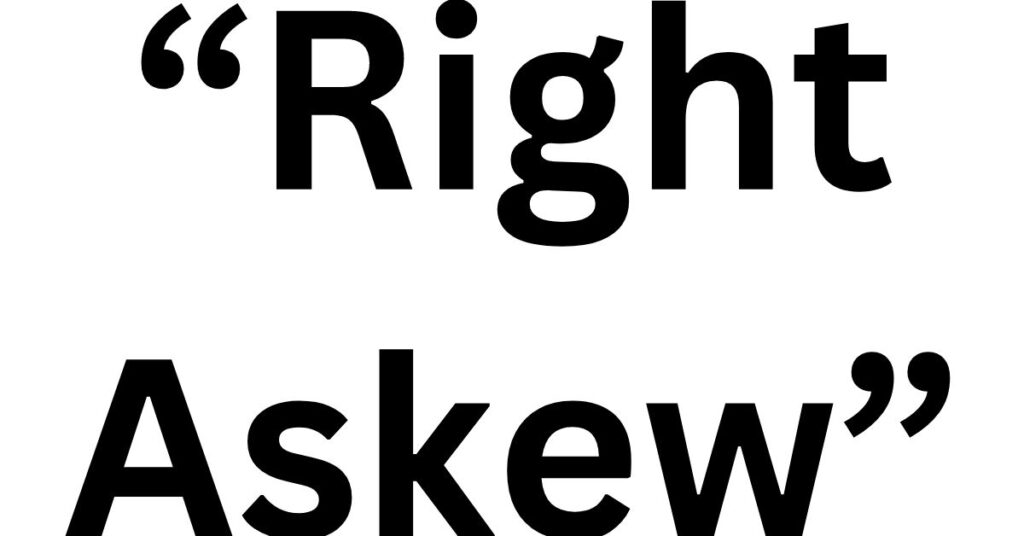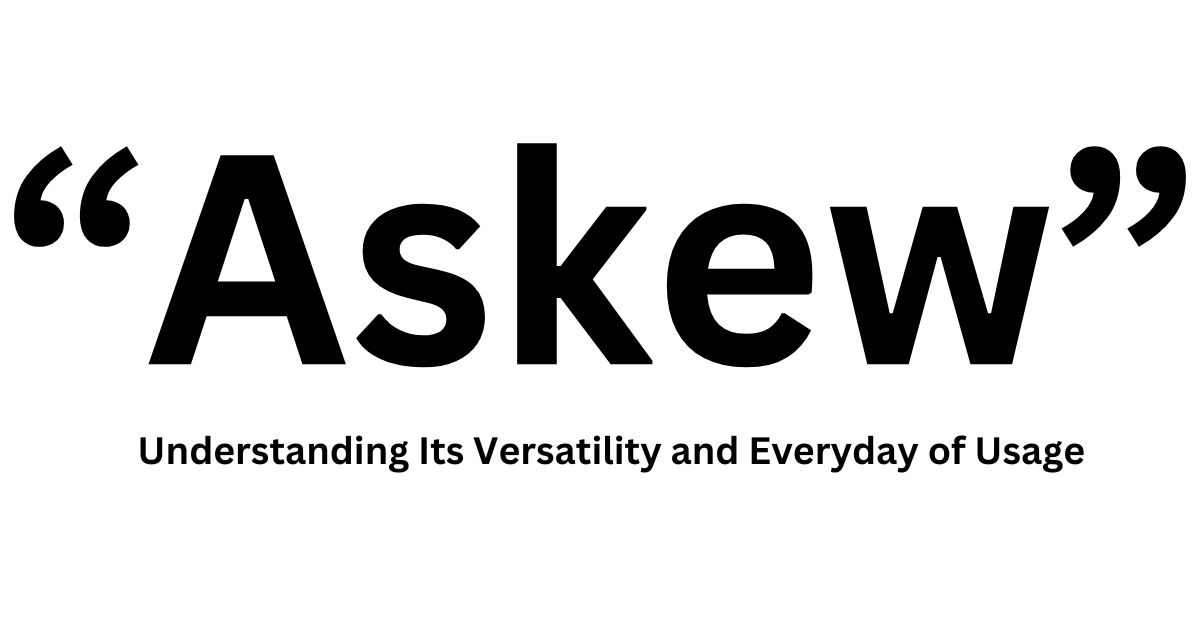Askew:Understanding Its Versatility and Everyday of Usage
Introduction
In todays world the richness of the English language, words often carry multiple meanings and can be used in various contexts. One such as versatile term is “askew.” and we will also discuss on Askew left and Askew right.
In this article, we will study into the depths of this word, understanding its definitions, applications, and even its ability to convey disapproval.
Unveiling the Meaning
1. Definition of “Askew”
Before we explore its nuances, let’s begin with a clear-cut definition. “Askew” is an adjective that means something is crooked, tilted, or out of line. It can apply to both physical objects and abstract concepts.
2. Physical Application
2.1 Describing Physical Disarray
Imagine a scenario where a beautifully framed picture hangs on the wall, but it’s slightly tilted. In this case, you can aptly say:
“The picture on the wall is askew.”
2.2 Structural Alterations
Likewise, “askew” can also be used to describe the aftermath of a powerful storm:
“The building was knocked askew by the storm.”
3. Abstract Interpretation
3.1 Plans Gone Awry
Moving from the tangible to the conceptual, “askew” can describe a plan or strategy that’s not quite right from the beginning:
“His plan was askew from the start.”
3.2 Misaligned Perspectives
Furthermore, the word can be employed to indicate a skewed perspective:
“Her perspective on the issue was askew.”
Conveying Disapproval
4. Expressing Disapproval
Apart from its literal and abstract uses, “askew” can also serve as a subtle tool for expressing disapproval or disdain. It’s as if one is casting a skeptical glance at something or someone.
4.1 Questioning Foolishness
Consider this situation:
“He looked at me askew when I told him my plan.”
In this context, “askew” implies a certain level of skepticism or disbelief in the plan’s feasibility.
Versatility of “Askew”
5. A Word with Many Facets
In summary, “askew” is a remarkably versatile word in the English language. Its applicability ranges from describing the physical world around us, where things may be slightly tilted or out of place, to the abstract realm, where plans and perspectives can be skewed.
Additionally, it serves as a subtle means of expressing disapproval or doubt towards someone’s actions or ideas.
Understanding “Askew Left” and “Askew Right”
In a world filled with nuances and subtleties of language, the terms “askew left” and “askew right” might sound a tad peculiar at first.
However, they hold the power to succinctly describe something that is tilted or crooked in its orientation, whether it’s a physical object, an abstract concept, or even the way someone perceives things.
Unraveling the Basics
What Does “Askew Left” Mean?
“Askew left” is a phrase that signifies an object or entity tilting towards the left side. Picture a painting hanging on a wall; if it’s askew left, it means that the artwork is slightly tilted to the left, creating an asymmetrical visual effect.

How About “Askew Right”?
Conversely, “askew right” denotes something leaning towards the right side. For instance, if a building has been impacted and is now askew right, it implies that the structure has tilted to the right side of its foundation, often as a result of external forces like earthquakes.

Beyond the Concrete: Abstract Uses
These terms aren’t confined to describing physical misalignment alone. They can also be skillfully applied to express abstract concepts, adding depth to our linguistic arsenal.
When Plans Go “Askew Left”
Imagine a plan that is askew left. In this context, it suggests that the plan is biased or skewed towards one side of an issue, showcasing a lack of impartiality or fairness.
Navigating Perspectives “Askew Right”
On the flip side, when we talk about a perspective that is askew right, it refers to a viewpoint based on false or misleading information. It’s akin to seeing the world through a distorted lens, where facts may be obscured or manipulated.
Putting It into Practice
Here are some illustrative sentences demonstrating how these terms can be used:
- The picture on the wall is hanging askew left, giving the room a quirky charm.
- The building was knocked askew right by the earthquake, posing structural challenges.
- His plan was askew left from the start, favoring a particular group’s interests.
- Her perspective on the issue was askew right, influenced by unreliable sources.
Embracing Nuance
It’s important to emphasize that “askew left” and “askew right” don’t always carry a negative connotation. They can also be employed neutrally or positively. For instance, someone might say they are “looking at something askew left” when they intentionally seek an unconventional perspective to gain new insights
Conclusion
The English language is replete with words that have intricate layers of meaning, and “askew” certainly fits into this category. Its adaptability allows it to describe a wide array of scenarios, making it a valuable addition to any writer’s vocabulary.
Frequently Asked Questions
1. Is “askew” commonly used in everyday conversation?
Yes, “askew” is a reasonably common word and can be used in both formal and informal contexts.
2. Can you provide more examples of using “askew” in a sentence?
Certainly! Here are a few more examples:
- The book on the shelf is askew.
- Her hair was all askew after the windstorm.
- The financial report’s numbers were askew due to a calculation error.
3. Are there synonyms for “askew”?
Yes, synonyms include “crooked,” “tilted,” “off-kilter,” and “awry.”
4. How can I improve my vocabulary with words like “askew”?
To enhance your vocabulary, read widely, maintain a word journal, and actively incorporate new words into your daily conversations and writing.
5. Can you recommend resources for expanding my English vocabulary?
Certainly! You can use vocabulary-building apps, read books from diverse genres, and follow online vocabulary challenges and quizzes to continually expand your word knowledge
6.Are “askew left” and “askew right” formal terms?
No, they are not formal terms but rather colloquial expressions used to describe tilted or skewed orientations.
7. Can these terms be used positively?
Absolutely! While they can convey negative connotations, they can also be employed neutrally or even positively to highlight unconventional perspectives.
8.. Are there synonyms for “askew left” and “askew right”?
Yes, alternatives include “tilted left” and “tilted right,” but these may not carry the same nuanced connotations.
9. How can I use these phrases in everyday conversation?
You can incorporate them when describing anything crooked, imbalanced, or biased, whether it’s a physical object, a plan, or a perspective.
10. What’s the origin of these terms?
The exact origin is unclear, but they have likely evolved organically in language to describe asymmetric or skewed elements in various contexts.
https://latesttechnologyhardware.com/: Askew:Understanding Its Versatility and Everyday of Usage




